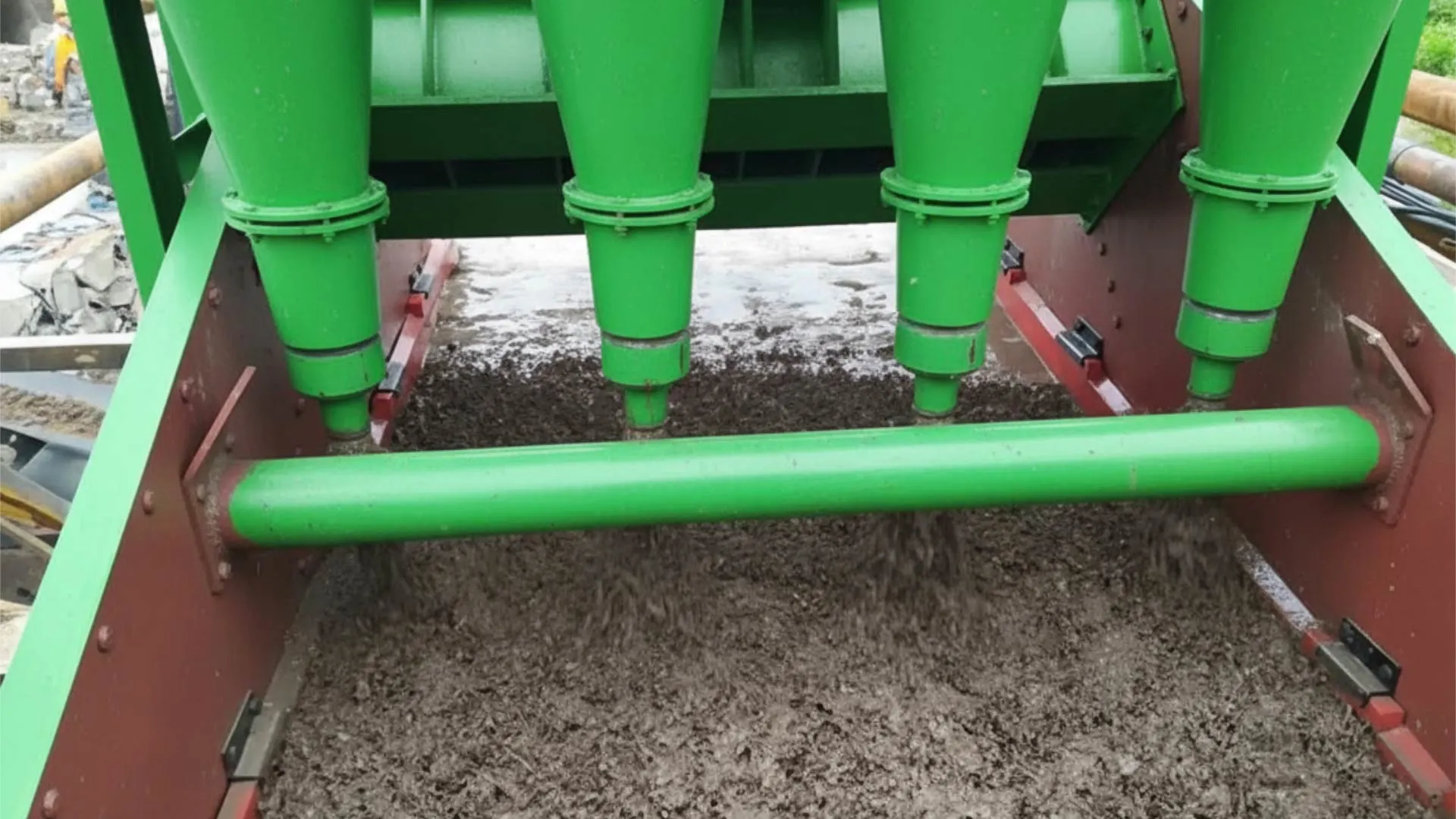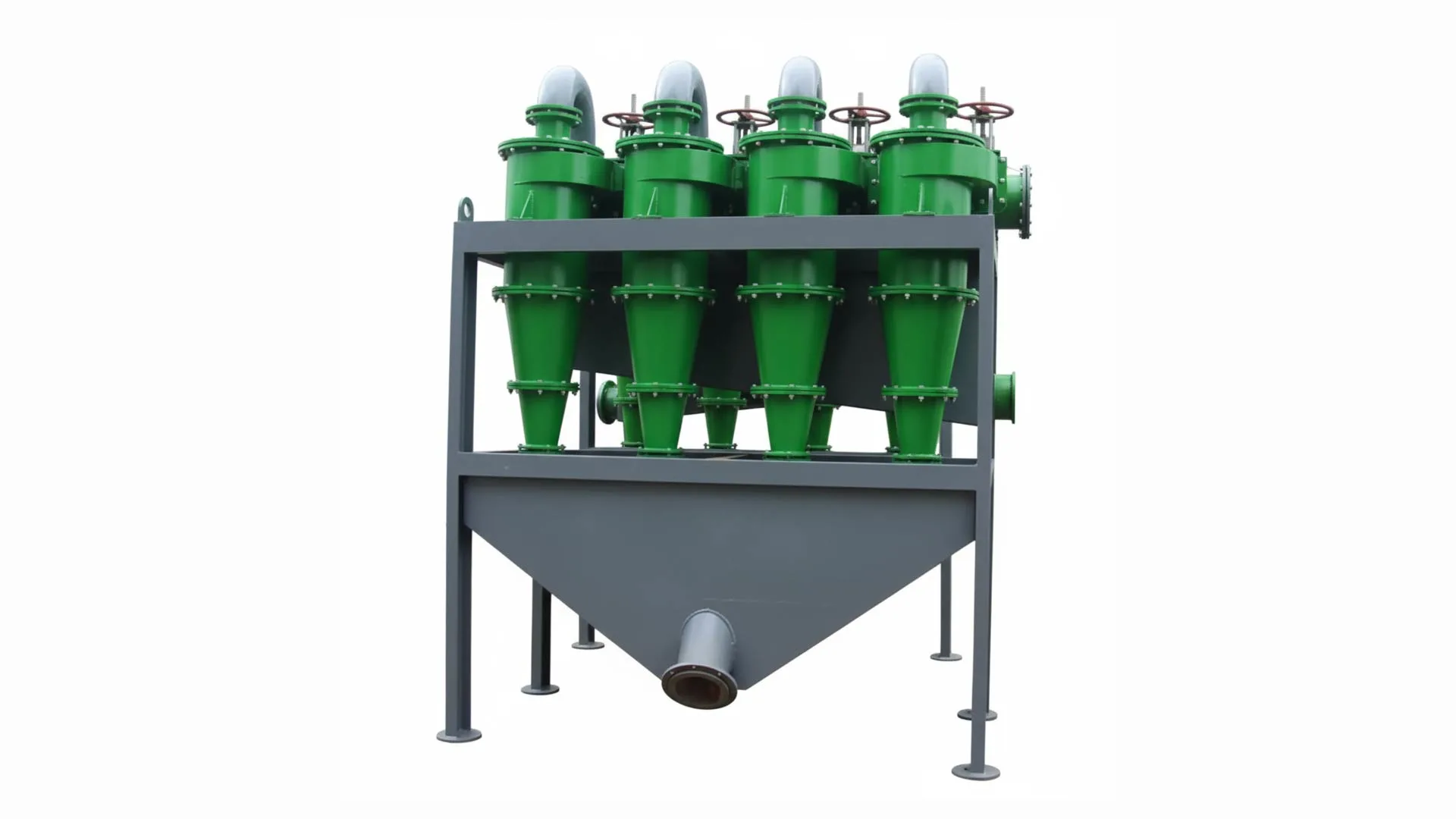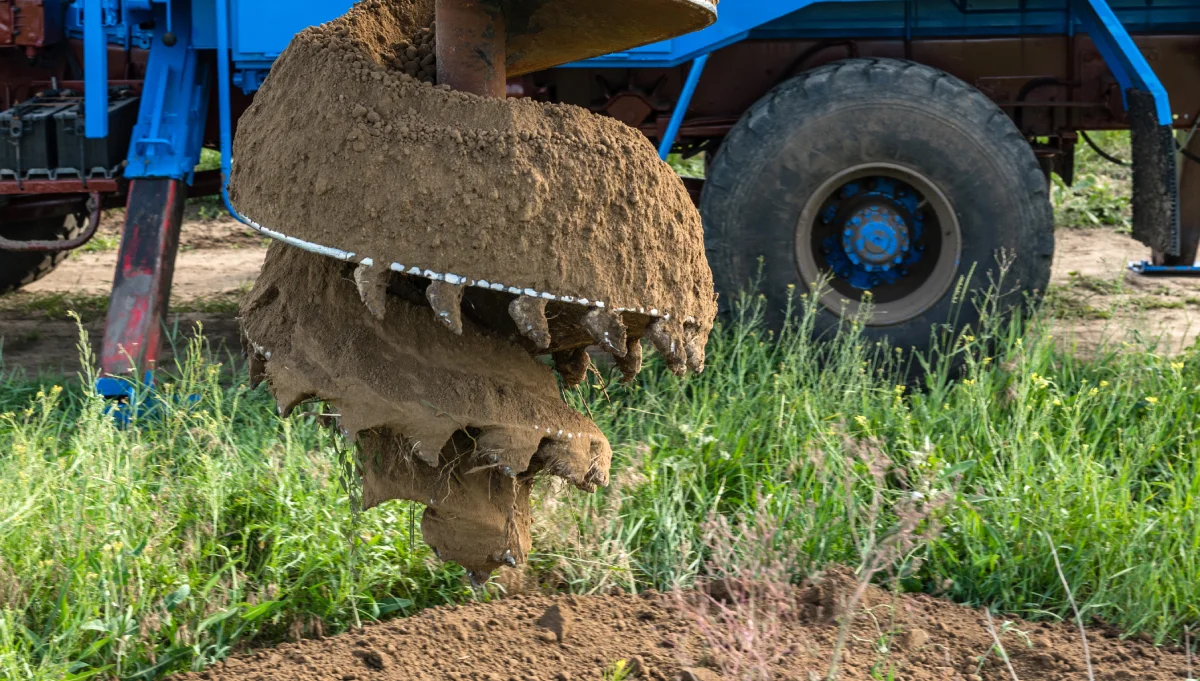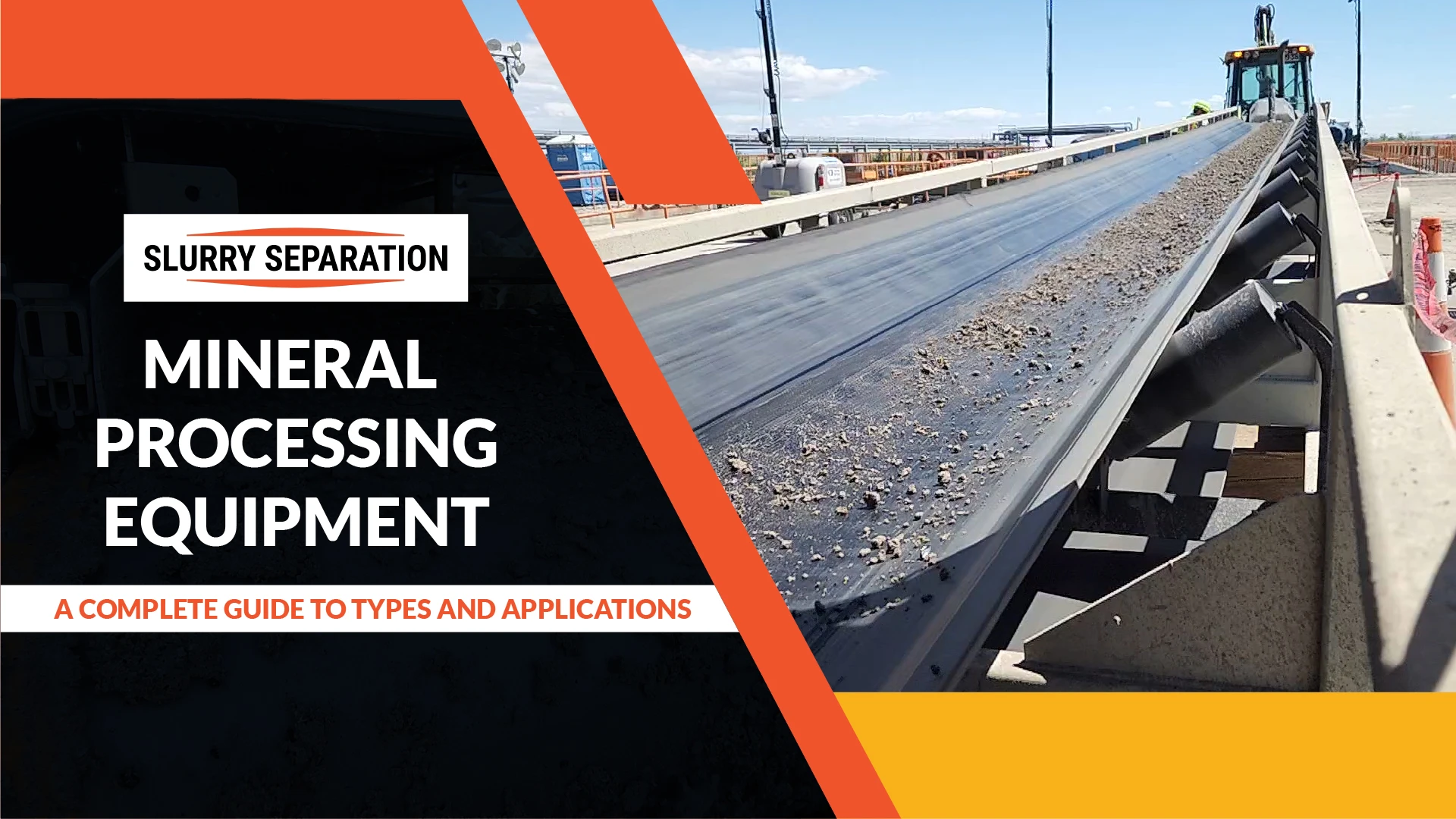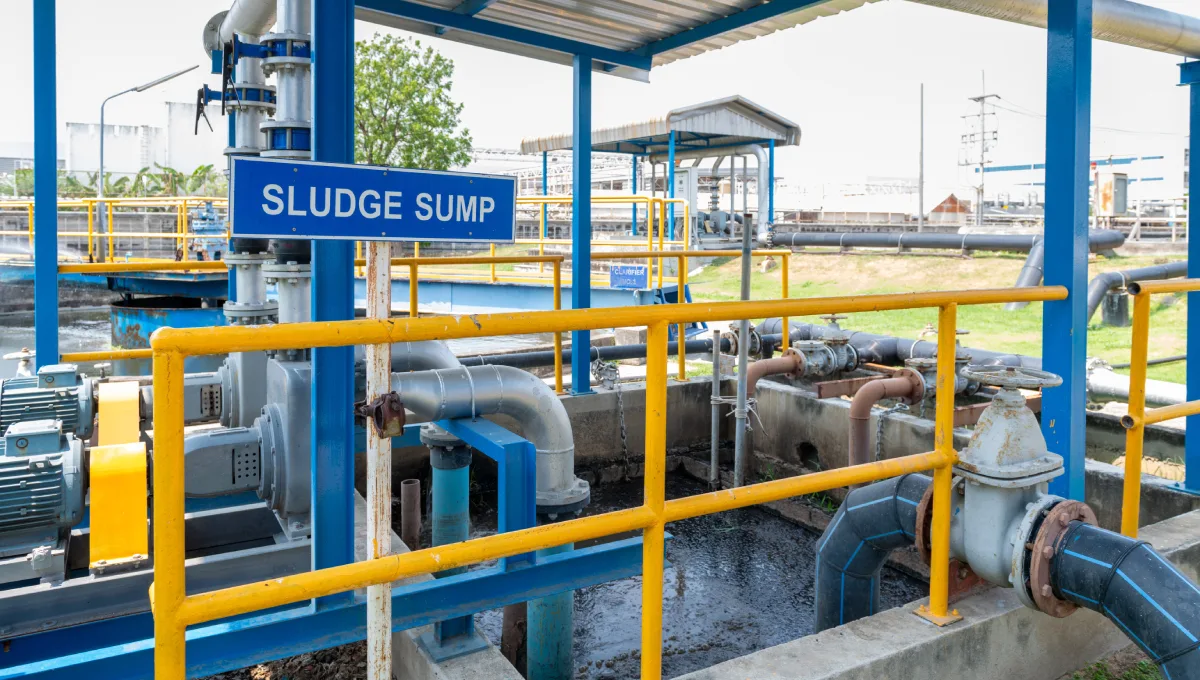- Understanding Hydrocyclone Separators
- Common Operational Issues and Root Causes
- How to Fix Common Issues with Hydrocyclones
- Factors Affecting Hydrocyclone Performance
- Maintenance of Hydrocyclone Systems
- Real-World Applications and ROI Impact
- Best Practices for Long-Term Reliability
- Ensuring Long-Term Success with Hydrocyclone Separators
The hydrocyclone separator has become one of the most widely adopted technologies in industries such as mining, oil and gas, municipal water treatment, and heavy manufacturing. Where efficiency and compliance are non-negotiable. The hydrocyclone separator is an energy-efficient and durable device that operates with minimal moving parts, making it ideal for high-volume industrial processes.
Similarly, a hydrocyclone sand separator is also frequently used in mining and aggregate operations to remove abrasive solids that can damage pumps and pipelines. Following that, the hydrocyclone oil separator plays a crucial role in oil and gas applications by separating oil droplets from water, ensuring environmental compliance, and protecting downstream equipment. These remarkable separator machines are energy-saving, strong, and work with very few moving parts; perfect for industrial applications.
When considering the broader perspective, the hydrocyclone also has its drawbacks. Common problems like obstructions, uneven pressure, or worn parts can cause unscheduled downtime and drastically lower performance. These issues are more than just technical setbacks for project contractors, engineering managers, and procurement chiefs; they have a direct effect on operational performance, budgets, and compliance. Production delays, increased use of replacement parts, and expensive fines are all consequences of a hydrocyclone separator that performs badly.
This article provides a structured guide to troubleshooting. It explores common operational issues, practical fixes, factors affecting performance, and best maintenance practices. With the right approach, companies can optimize their hydrocyclone sand separator and hydrocyclone oil separator systems, turning them into reliable, ROI-driven assets that enhance long-term efficiency.
Understanding Hydrocyclone Separators
Working Principle
A hydrocyclone separator is a pressure-driven device designed to classify, separate, or sort particles suspended in liquid. The feed slurry enters the hydrocyclone tangentially, creating a vortex within it. Centrifugal forces then drive denser particles toward the cone wall, where they exit through the underflow (apex). At the same time, lighter particles and the fluid itself are forced toward the overflow (vortex finder). This simple yet efficient process allows the hydrocyclone to separate particles of varying densities without the need for extensive mechanical parts.
Applications
Hydrocyclone sand separators are widely used in the mining and aggregate industries to remove abrasive sand and fine solids from process water or slurry streams. By effectively filtering out coarse particles, these hydrocyclone separators help prevent equipment wear and improve the efficiency of downstream processes, such as pumps and pipelines.
On the other hand, the hydrocyclone oil separator is commonly used in the oil and gas, petrochemical, and produced water industries. It separates oil droplets from water, making it an essential component for environmental compliance. This variant plays a critical role in ensuring that discharged water meets regulatory standards for oil content, preventing potential fines or shutdowns.
Across both applications, the hydrocyclone separator offers high efficiency with a minimal operational footprint, providing a cost-effective alternative to more energy-intensive separation technologies. Its versatility and reliability make it a preferred choice in industries requiring continuous and high-volume separation processes.
Common Operational Issues and Root Causes
Even the best-designed hydrocyclone separators encounter performance challenges. Identifying these issues early is crucial to maintaining efficient operations and avoiding costly downtime.
Reduced Separation Efficiency
Symptoms: High solids carryover in the overflow, poor clarity in process water, or reduced product quality.
Root Causes:
- Incorrect feed pressure
- Worn vortex finder or liners
- Incorrect spigot size
Blockages and Plugging
Symptoms: Sudden pressure spikes, unstable underflow, or total stoppage.
Root Causes:
- Oversized particles entering the feed
- Lack of pre-screening to remove large particles
- Slurry inconsistencies (density spikes, foreign objects)
Wear of Components
Symptoms: Frequent maintenance, unexpected leaks, or declining performance.
Root Causes:
- Abrasive solids such as silica or sand (common in hydrocyclone sand separators)
- Corrosive fluids (especially in hydrocyclone oil separators)
- Use of non-optimized wear materials
Inconsistent Pressure and Flow
Symptoms: Variable cut size, fluctuating underflow and overflow rates.
Root Causes:
- Pump fluctuations
- Poor pipeline design leading to air entrainment
- Lack of automated pressure regulation
Excessive Bypass or Short-Circuiting
Symptoms: Poor separation, with both coarse and fine solids appearing in the overflow.
Root Causes:
- Incorrectly sized hydrocyclone separator
- Excessive feed volume beyond design capacity
- Damaged or improperly installed vortex finder
How to Fix Common Issues with Hydrocyclones
Troubleshooting a hydrocyclone separator involves more than just fixing breakdowns; it’s about restoring efficiency and preventing recurrence to ensure reliable, cost-effective operation.
Feed Condition Optimization
- Maintain consistent feed pressure within the manufacturer-recommended limits to avoid fluctuating performance.
- Use pre-classification or screening to remove oversized particles before they reach the hydrocyclone sand separator, ensuring smooth flow and reducing strain on the system.
- Ensure steady slurry density by managing upstream blending processes. Inconsistent slurry can cause excessive wear and reduce separation efficiency.
Adjusting Design Parameters
- Replace or resize the spigot to restore proper underflow control and maintain optimal separation.
- Regularly check the vortex finder for wear or clogging. Adjust or replace it as needed to maintain proper flow dynamics.
- Verify cone angle and diameter, ensuring they align with material properties; mismatches can lead to inefficiencies and improper separation, especially in hydrocyclone oil separators.
Maintenance Interventions
- Replace worn liners, cones, or apexes before failure to avoid costly downtime and reduce the risk of system failure.
In high-abrasion environments, consider upgrading to ceramic, polyurethane, or other wear-resistant materials for enhanced longevity and performance.
Monitoring and Automation Tools
- Install sensors to track pressure, flow rate, and slurry density, ensuring real-time performance optimization and optimal control.
- Integrate automated control systems to adjust feed pumps or valves automatically, thereby minimizing the need for operator intervention.
- Leverage predictive analytics to identify wear patterns before they lead to costly breakdowns.
Factors Affecting Hydrocyclone Performance
The performance of a hydrocyclone separator is variable and influenced by several factors, including the equipment’s design, slurry characteristics, and operating conditions. It is essential to comprehend these factors in order to maximize performance and prolong service life.
Feed Pressure and Flow Consistency
Hydrocyclones rely on consistent feed pressure to generate the centrifugal force necessary for effective separation. If the pressure is too low, the separation efficiency suffers, resulting in poor results. Conversely, excessive pressure can cause unnecessary wear on components, particularly in hydrocyclone sand separators, which handle abrasive slurries.
Slurry Characteristics
- Solids concentration: Dense slurries increase pressure drop and reduce separation efficiency by overwhelming the system.
- Particle size distribution: A broad distribution of particle sizes makes it challenging to maintain an optimal cut size, resulting in inefficiencies in the separation process.
- Viscosity: High-viscosity fluids can hinder the formation of a stable vortex, compromising the hydrocyclone separator’s ability to separate particles effectively.
Design Geometry
- Cone angle: The angle of the cone has a significant impact on classification efficiency. Steeper cones are better suited for handling finer particles, making them ideal for specific applications, such as hydrocyclone sand separators.
- Diameter: The diameter of the hydrocyclone dictates its throughput. Smaller diameters provide finer separations but may limit capacity.
- Vortex finder size: This component influences the clarity of the overflow and the efficiency of the cut point.
Material Selection
Choosing the appropriate building material is essential. Depending on the operating environment, materials such as steel, ceramic, or polyurethane are selected to ensure durability, especially in corrosive or abrasive environments. To prevent material deterioration, exposure to chemically rich environments must also be considered for hydrocyclone oil separators.
Operating Environment
Extreme temperatures and chemical exposure, often found in hydrocyclone oil separators, can degrade the system’s materials over time, leading to potential failures if not addressed properly.
Maintenance of Hydrocyclone Systems
A hydrocyclone separator’s ability to operate dependably hinges on its regular and controlled maintenance. Extended service life, less downtime, and increased operating efficiency are all guaranteed by proactive care.
Preventive Maintenance Schedules
Regular preventive maintenance is crucial for ensuring continuous and efficient operation.
- Daily checks: Monitor pressure and flow stability to identify fluctuations that could indicate an underlying issue.
- Weekly inspections: Examine underflow and overflow for signs of bypassing or wear. Catching early signs of damage helps prevent more costly repairs.
Wear Component Inspection
The components of a hydrocyclone separator that come into direct contact with slurry are subject to high wear. Liners, spigots, and cones should be inspected regularly and replaced at the recommended intervals to avoid performance degradation.
- Hydrocyclone sand separators, which handle abrasive materials, require more frequent inspections and timely replacements.
- Always maintain a stock of critical spare parts to minimize downtime and ensure operational continuity.
Predictive Maintenance
Advanced maintenance strategies go beyond reactive repairs.
- Deploy sensors to monitor vibration, pressure fluctuations, and slurry properties, providing real-time data on system performance.
- Utilize data analytics to forecast component wear patterns, enabling you to schedule preventive interventions before a failure occurs. This proactive approach is particularly valuable in hydrocyclone oil separators, where costly shutdowns must be avoided.
Spare Parts Planning and Supplier Support
To ensure quick turnaround times for repairs, partner with suppliers who can deliver replacement parts quickly.
- Service agreements: Consider establishing agreements with suppliers to ensure rapid support and technical guidance, particularly in high-demand industries such as oil and gas.
Best Practices for Lifecycle Optimization
- Rotate wear components where applicable to ensure even wear across parts.
- Upgrade to modular designs for easier part replacement and maintenance.
- Standardize maintenance procedures across facilities to reduce variability and improve the efficiency of your maintenance teams.
Real-World Applications and ROI Impact
Mining: Hydrocyclone Sand Separators
Downtime in mining leads to decreased output and lower profitability. Hydrocyclone sand separators ensure the smooth functioning of these systems by eliminating abrasive particles from process water and slurry streams. Lower maintenance costs, reduced pump wear, and increased ore recovery rates are guaranteed by routinely addressing issues such as blockages or liner wear. Long-term cost savings are facilitated by a properly maintained hydrocyclone separator, which increases recovery, minimizes downtime, and enhances efficiency.
Oil & Gas: Hydrocyclone Oil Separators
In the oil and gas sector, treated water is essential. By effectively separating oil droplets from water streams, a hydrocyclone oil separator ensures compliance with discharge requirements. In the end, proper maintenance and troubleshooting reduce operating costs and environmental impact by minimizing performance difficulties, avoiding penalties, and eliminating the need for chemical treatments.
Municipal and Industrial Operations
Hydrocyclone separators ensure uninterrupted operation in industrial and wastewater processes by protecting downstream equipment and preventing blockage. A better ROI is achieved through increased efficiency and decreased lifespan costs resulting from proper maintenance.
Best Practices for Long-Term Reliability
Procurement Insights
Selecting the right hydrocyclone separator involves more than just considering upfront costs. Buyers should evaluate factors such as:
- Material construction: Ensure the hydrocyclone is suited to the slurry conditions it will encounter, whether for hydrocyclone sand separators in mining or hydrocyclone oil separators in the oil and gas industry.
- Supplier track record: Look for suppliers with a proven track record of success in similar industries.
- Availability of spare parts and service: A reliable supplier should provide fast access to spare parts to minimize downtime.
Supplier Support and After-Sales Service
Procurement decisions should prioritize suppliers that offer strong support, including:
- On-site technical support to address any operational issues quickly.
- Training for plant staff to ensure proper operation and maintenance of the hydrocyclone separator.
- Performance audits ensure that the system continues to operate efficiently over time, thereby guaranteeing long-term ROI.
Lifecycle ROI Considerations
Cheaper equipment may save money upfront, but over time, hefty maintenance and repair costs may cancel out those savings. Purchasing high-quality hydrocyclones with supplier support guarantees a longer lifespan, fewer breakdowns, and substantial long-term cost savings.
Ensuring Long-Term Success with Hydrocyclone Separators
One of the most adaptable and economical methods for liquid-liquid and solid-liquid separation is still the hydrocyclone separator. However, efficient management is essential to its effectiveness. Companies can significantly enhance the dependability and efficiency of their hydrocyclone separator systems by understanding and addressing common operational issues, employing systematic troubleshooting techniques, and implementing proactive maintenance plans.
The lesson for project contractors, engineering managers, and procurement directors is unmistakable: reliability is not a random occurrence. It is the outcome of thoughtful choices, strict maintenance procedures, and solid, supportive supplier relationships. The proper approach ensures long-term operational efficiency and optimal return on investment, whether you’re using a hydrocyclone separator in the mining sector to remove abrasive particles or a hydrocyclone oil separator in the oil and gas industry to treat produced water.
Our specialty at Slurry Separation is providing the latest hydrocyclone separators, including hydrocyclone sand separators and hydrocyclone oil separators, designed to meet the exacting requirements of various sectors. Our products are designed to be as efficient as possible, minimize downtime, and provide a guaranteed return on investment.
To assure long-term operational success, enhance compliance, and streamline your operations, investigate Slurry Separation’s hydrocyclone solutions now.

